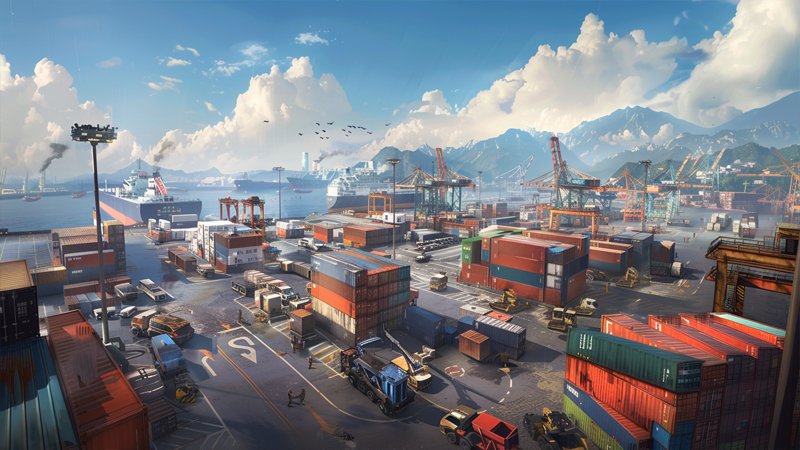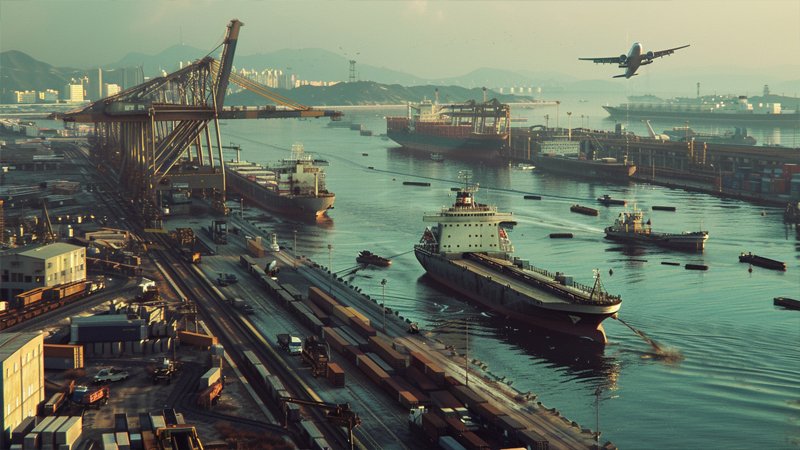
I recently discovered affordable shipping options from China that save money and streamline operations.
Cheapest shipping from China uses economic methods like LCL, FCL, and optimized routes to lower costs while maintaining reliability.
Now, let’s explore key strategies for cost-effective shipping from China.
What are the most economical shipping methods from China?
I found that methods such as sea freight1, rail shipping2, and economy air cargo3 offer low-cost solutions for different shipment sizes.
Economical shipping methods include sea freight, rail shipping, and economy air cargo, each balancing cost and transit time effectively.

When I first started shipping from China, I explored several methods that could fit various needs. Sea freight is often the go-to option for large, bulky shipments because it offers the lowest cost per unit despite longer transit times. Rail shipping provides a balanced alternative—faster than sea but still more economical than standard air freight. Economy air cargo is ideal for smaller, time-sensitive shipments, giving a middle ground between speed and cost.
I recall one instance when I had to ship a mix of electronics and apparel. Using sea freight for the bulk of the items saved me a significant amount, even though I had to wait a few extra days. In contrast, when I needed a quick delivery for a small order, economy air cargo came through without breaking the bank.
Here’s a quick comparison:
| Method | Key Benefits |
|---|---|
| Sea Freight | Lowest cost, high capacity, slower transit |
| Rail Shipping | Balanced speed and cost, reliable service |
| Economy Air | Fast delivery for smaller shipments, cost-effective |
Each method has its own advantages, and the key is matching your shipment’s needs with the right option.
How can you save costs by using LCL (Less than Container Load) and FCL (Full Container Load) shipping?
I realized that choosing between LCL4 and FCL5 can significantly affect your overall shipping costs6 based on volume and urgency.
Using LCL and FCL wisely allows you to match your shipment size with cost efficiency, minimizing expenses through shared container space or full container discounts.

At the beginning of my shipping journey, I was often puzzled about whether to opt for LCL or FCL. LCL (Less than Container Load) is perfect when you don’t have enough goods to fill an entire container. It allows you to share container space with other shippers, meaning you only pay for the portion you use. This option is excellent for startups or businesses with smaller, less frequent shipments, though it can sometimes involve longer transit times due to the consolidation process.
On the other hand, FCL (Full Container Load) is more cost-effective when you have enough volume to fill a container, or even nearly fill it. Even if you don’t completely load it, FCL tends to have a lower cost per unit and involves less handling, reducing the risk of damage. I remember a time when I switched from LCL to FCL for a large order and saw immediate savings on per-unit costs and improved delivery reliability.
Consider this simple comparison:
| Aspect | LCL | FCL |
|---|---|---|
| Cost | Lower for small shipments, shared expense | Lower per unit for large volumes |
| Handling | More handling, higher risk of damage | Less handling, more secure |
| Transit Time | Slightly longer due to consolidation | Generally faster with dedicated container |
Evaluating your shipment volume and urgency will help you decide which method saves you the most money.
Which shipping routes are best suited for reducing transportation costs?
I learned that choosing the right shipping routes can cut expenses by avoiding congested ports7 and optimizing transit times8.
Efficient shipping routes, particularly those through major hubs and direct paths, minimize delays and lower overall transportation costs.

Shipping routes play a critical role in overall cost efficiency. I found that routes through established, less congested ports often yield lower fees and faster transit times. For example, a direct route from Shanghai to Los Angeles can sometimes be cheaper than a route with multiple stopovers, even if the latter seems shorter on paper.
One experience that stands out was when I chose a less conventional route that bypassed a notoriously busy port. The result was a smoother transit and fewer delays, which in turn reduced extra handling fees and demurrage charges. I now always compare route options not only by distance but also by historical performance data, fuel surcharges, and toll fees.
To help visualize, here’s a simple table:
| Route | Estimated Transit Time | Cost Factor |
|---|---|---|
| Shanghai to Los Angeles | 20-30 days | Low |
| Shenzhen to New York | 25-35 days | Medium |
| Guangzhou to Hamburg | 30-40 days | Low-Medium |
Analyzing these routes based on your specific shipment needs can lead to significant savings.
What strategies can you implement to reduce shipping expenses from China?
I discovered several practical strategies that consistently lower shipping costs without compromising on service quality.
Adopting strategies like bulk consolidation, rate negotiation, and flexible scheduling can significantly reduce shipping expenses from China.

Over the years, I’ve experimented with various approaches to cut shipping costs. One of the most effective methods has been bulk consolidation9. By combining smaller shipments into one larger container, I can dramatically reduce the per-unit cost. Negotiating long-term contracts with freight forwarders also brings down rates over time, especially if you have regular shipping needs.
Flexible scheduling is another key strategy. Being open to longer transit times or shipping during off-peak seasons often results in lower rates. I once adjusted my shipping schedule by a few days and noticed a considerable drop in cost, proving that timing can be a crucial factor.
Technology has also been a game changer. By using tracking and analytics tools, I can monitor shipping trends and identify the best times to book shipments. Local expertise in China, such as advice from experienced freight agents, helps uncover hidden discounts and optimal shipping practices.
Here’s a breakdown of effective cost-saving strategies:
| Strategy | Benefit |
|---|---|
| Bulk Consolidation | Reduces per-unit shipping cost |
| Rate Negotiation | Secures discounts through long-term contracts |
| Flexible Scheduling | Lowers costs by avoiding peak season surcharges |
| Local Expertise | Access to hidden deals and regional insights |
These tactics, when combined, create a robust plan to keep shipping expenses as low as possible.
Conclusion
Smart method selection, optimized routes, and strategic planning make shipping from China more affordable.
-
Learn about the cost benefits and capacity advantages of sea freight for large shipments. ↩
-
Explore the reliability and cost-effectiveness of rail shipping as an alternative to air and sea freight. ↩
-
Discover how economy air cargo can provide a cost-effective solution for your smaller, time-sensitive shipments. ↩
-
Understanding LCL shipping can help you optimize costs for smaller shipments and improve your logistics strategy. ↩
-
Exploring FCL shipping benefits can reveal cost savings and efficiency for larger shipments, enhancing your shipping decisions. ↩
-
Learning strategies to reduce shipping costs can significantly impact your bottom line and improve overall profitability. ↩
-
Learn about the impact of congested ports on shipping expenses and how to avoid them for better efficiency. ↩
-
Explore the various factors that affect transit times and how optimizing them can lead to cost savings. ↩
-
Explore how bulk consolidation can significantly lower your shipping costs and improve efficiency. ↩




